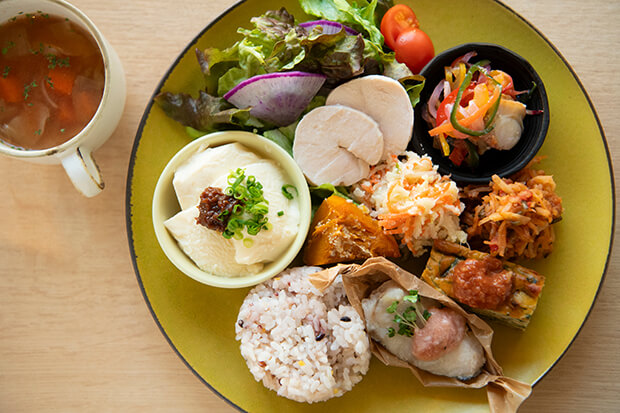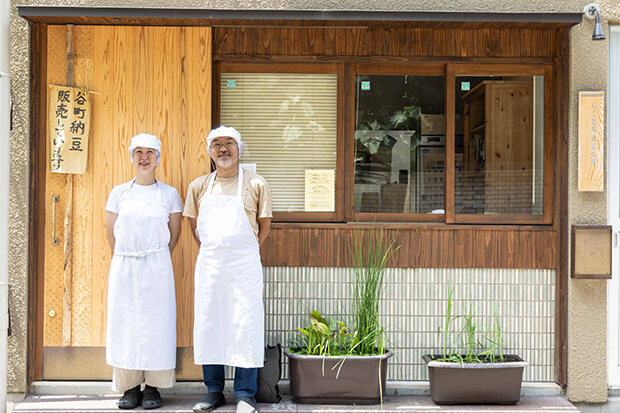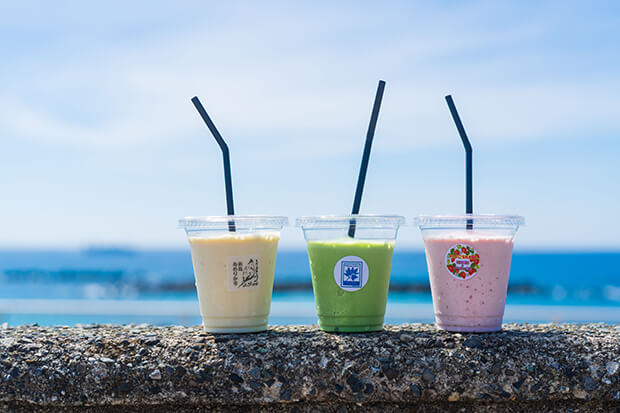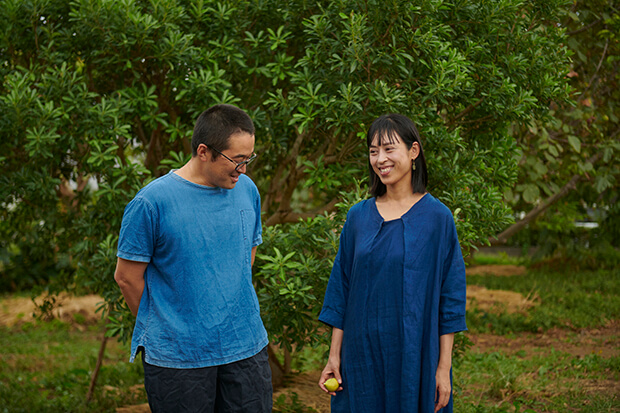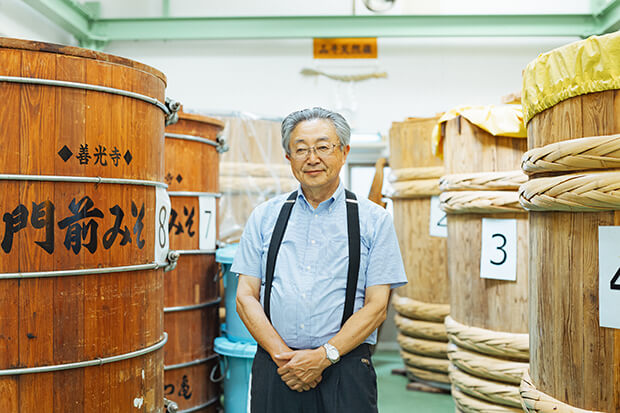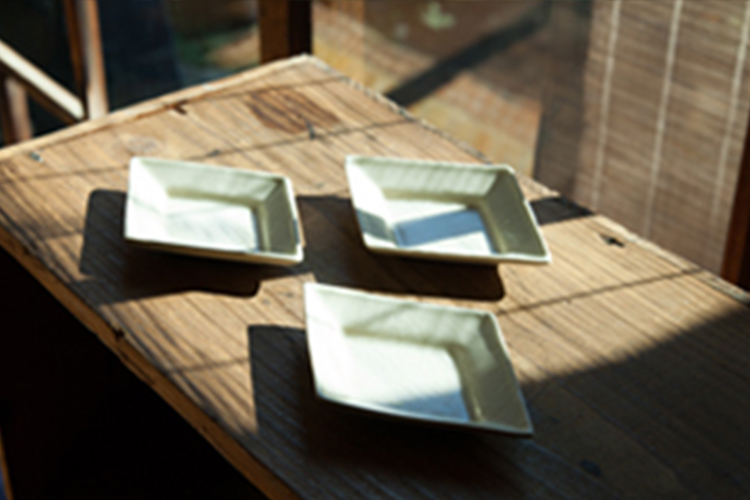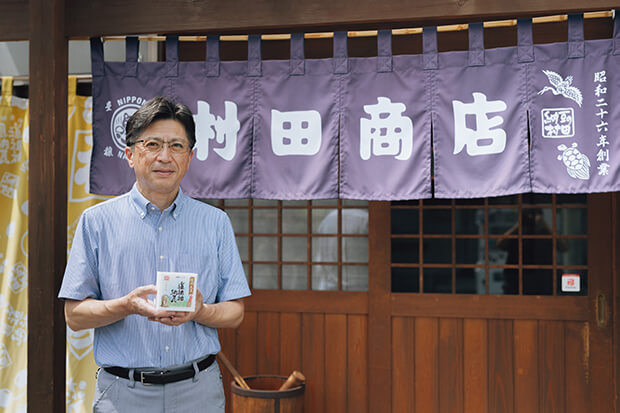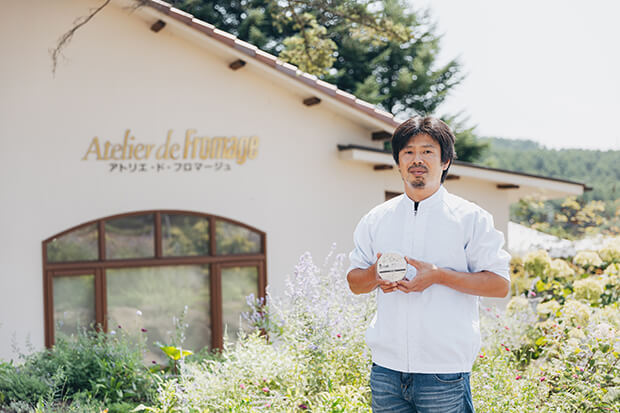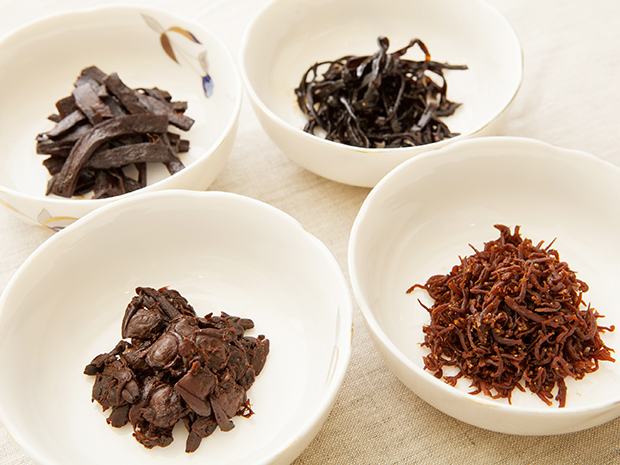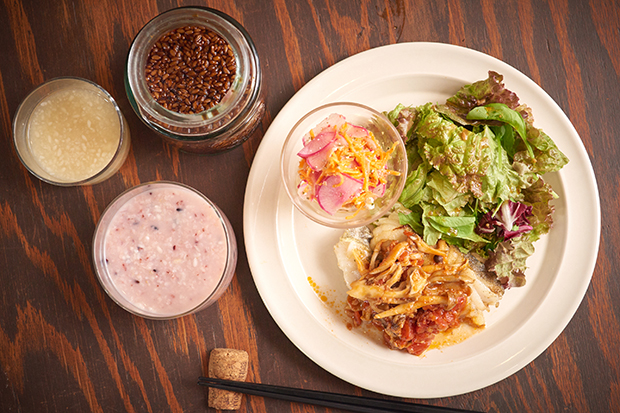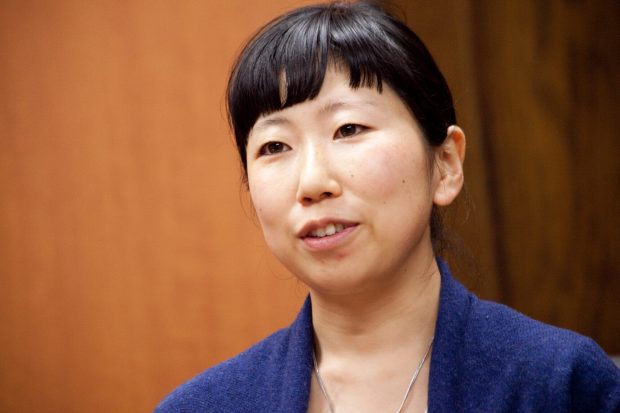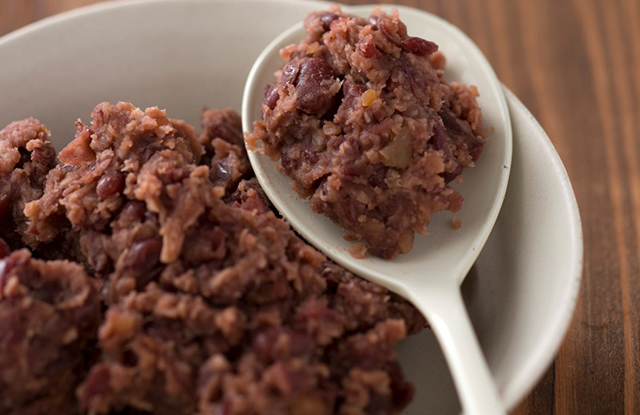Warm Table Settings for a Cold Winter’s Day
Dec 12,2013
Making lacquerware part of your everyday table setting
Another commonly misunderstood material, according to Aya, is lacquer. Lacquerware is strongly associated in people’s minds with the lacquered bowls and stacked lacquered boxes used on special occasions in Japan. But Aya encourages people to make it part of their everyday table setting.
“The wonderful thing about the lacquerware of Kamata Katsuji, the artist featured here, is its versatility. It blends right into your table setting and can be used to serve just about anything. Here I’ve used a lacquered bowl for serving rice and a lacquered plate for salad and croquettes. Lacquerware assumes a different character depending on what you combine it with. In winter, it lends your dining table a charm quite different from that of ceramic or porcelain.”
Kamata Katsuji’s pieces are striking for their beautifully organic shape. He has always loved the subtle variability in form characteristic of ceramic and glass. To achieve the same effect in lacquer, he uses what is called the dry-lacquer technique. To achieve the same effect in lacquer, he uses what is called the dry-lacquer technique. This is a traditional technique for fashioning large objects such as Buddhist statuary by building up layers of hemp cloth and lacquer. The finished piece is thinner and more lightweight than lacquerware made using a wooden core.

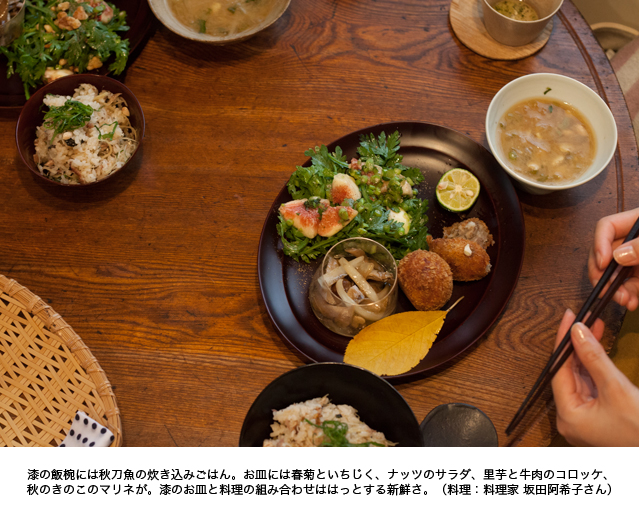
In the lacquered bowl: rice cooked with pieces of Pacific saury. On the plate: salad made with shungiku chrysanthemum leaves, figs, and nuts; taro and beef croquettes; and marinated autumn mushrooms. The combination of the lacquerware plate and the cuisine is strikingly unusual. (Food prepared by culinary expert Sakata Akiko)
The artist in his own words
Bringing natural irregularity and sleek forms to lacquerware: Kamata Katsuji
After completing high school, Kamata Katsuji decided to attend art school. His ambition was to become a craftsman, since then he would never have to retire. While studying at art school, he became fascinated by the process of making lacquerware and how it didn’t involve dramatically transforming then materials; it was a matter of simply working steadily away. He therefore made up his mind to pursue a career as a lacquer artist. After graduating, he apprenticed under a lacquer artist in Wajima before striking out on his own. He now works in a studio overlooking the ocean off Wajima.
We asked Katsuji about his output.
“People sometimes tend to think that the hallmark of my work is the use of the dry-lacquer technique,” he explained, “but what most interests me is form. I sought to create forms that displayed natural irregularity while still being sleek. I guess the dry-lacquer technique turned out to be the best way to achieve that.”
Lacquerware was not something Katsuji was very familiar with before he started making it himself.
“If I was going to make lacquerware anyway, I wanted it to fit into everyday surroundings. Looking at the dining table of my own home, there are both Japanese and Western elements. I envisioned the kind of dishes that would go well with an everyday table setting. And so inevitably my lacquerware pieces ended up being understated. The colors aren’t flashy, and the surface isn’t smooth and shiny.”
After a piece has been used for a while, the texture of hemp fabric appears on the surface. We asked about that too.
“I wanted to make lacquerware that was as ordinary and down-to-earth as possible, and this was the result. I figured that slightly textured lacquerware would be easier to use than something silky smooth and stiffly formal.”
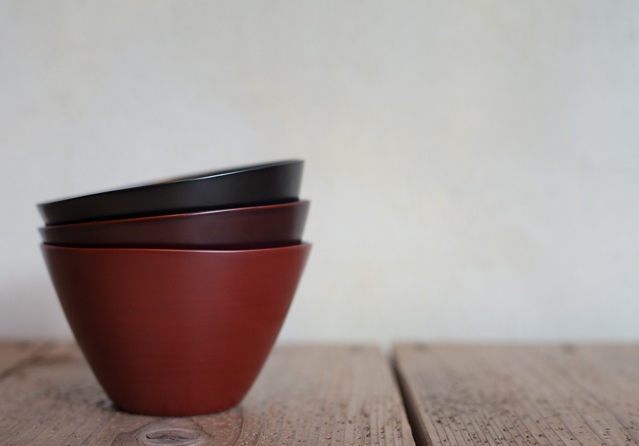
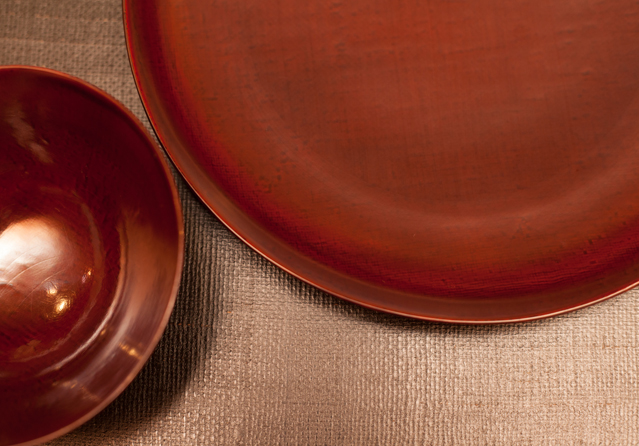
Lacquerware is generally thought of as being fiddly to care for. They say you should avoid putting it in water, but that’s a misunderstanding, according to Katsuji.
“There’s nothing wrong with submerging lacquerware in water as long as it doesn’t have a deep gash reaching the core. On the contrary, after serving rice or something in it, you can soak it in water for ten minutes and give it a gentle wash. That’s better for lacquer than scrubbing it. It’s okay to use dishwashing liquid, but using too much will cause dryness, just as when washing your hands. As long as the dish doesn’t have heavy grease stains, you can rinse it with just cold or hot water and use a sponge. That way it will take on a nice sheen the longer you use it. It’s okay to let lacquerware dry naturally in a dish rack, but wiping it dry with a dishcloth will give it a nice sheen free of water stains.”
One of the great things about lacquerware is that the lacquer can be reapplied.
“A dish that’s become chipped after many years of use can be restored to new by relacquering it. If your lacquerware has scratches that bother you, get it relacquered so you can use it for many more years. It always delights me when I’m reunited with a dish that has been lovingly used for years. I plan to continue making tableware that’s user-friendly for everyone.”

A rice bowl that a customer has asked Kamata Katsuji to relacquer. Katsuji is always delighted to be reunited with a dish that’s been lovingly used like this one.
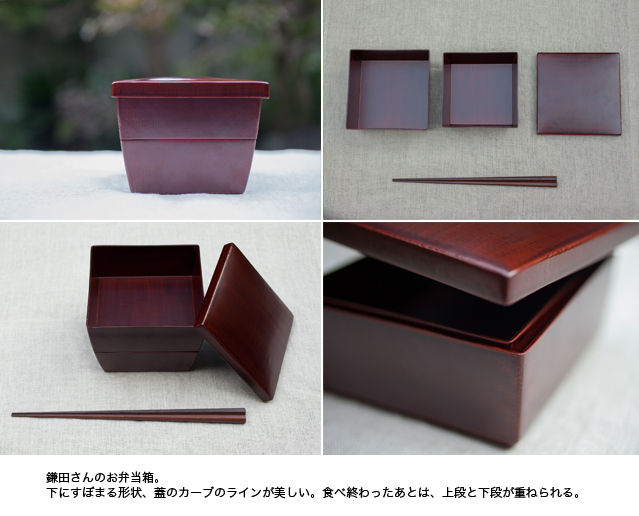
A bento box made by Kamata Katsuji. The tapered design and curved lines of the lid are particularly appealing. The upper and lower sections can be stacked once you finish eating.
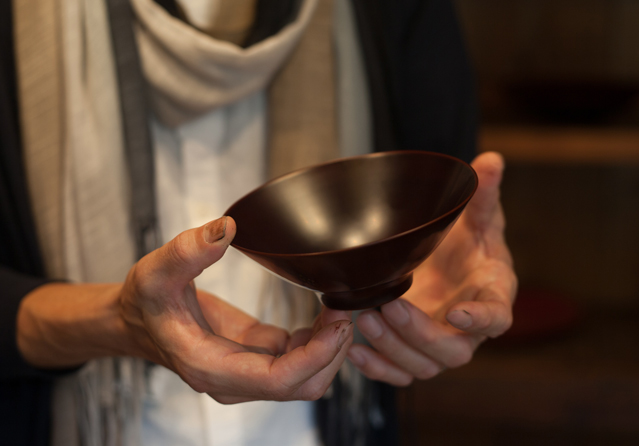
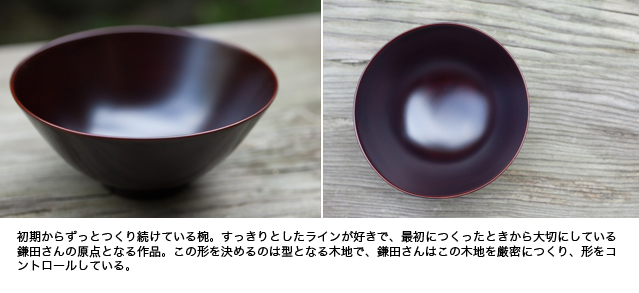
A bowl of a design Katsuji has been making since his earliest days as an artist. This design marks the starting point of his career. He’s fond of its sleek lines, which is why he’s been attached to it since the first time he made it. Its form is determined by the wooden core, which Katsuji makes while carefully controlling its shape.
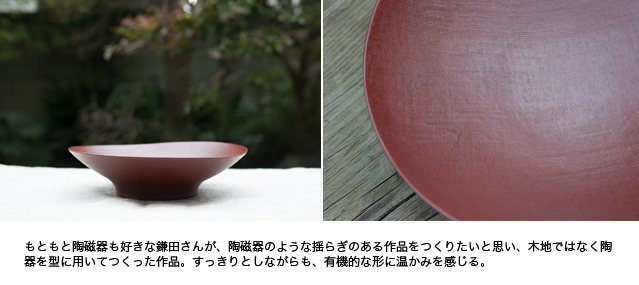
Katsuji has always been fond of pottery. This piece was made with a ceramic rather than a wooden core to create a dish with the subtle irregularity characteristic of that medium. Its sleek yet organic design projects warmth.

